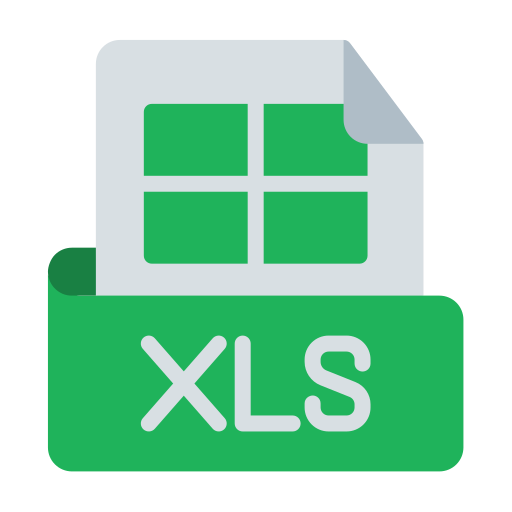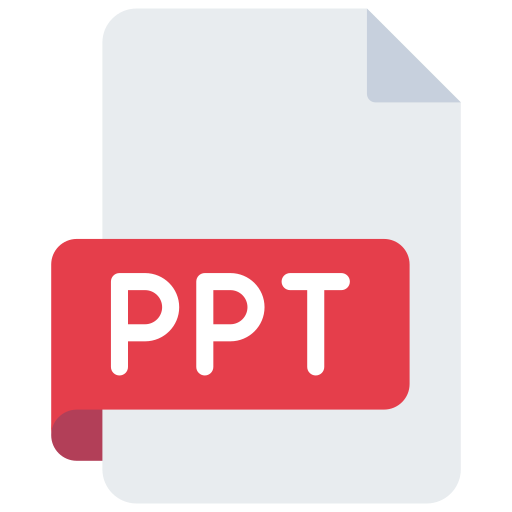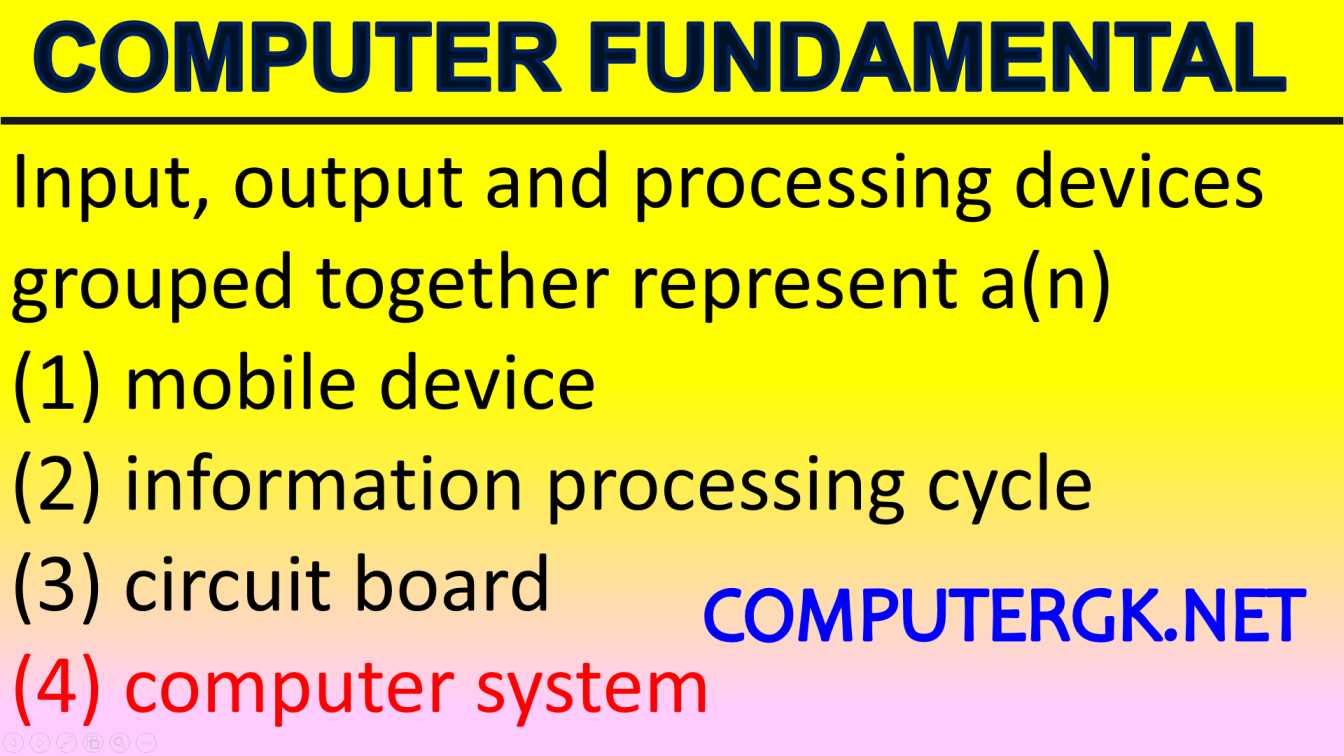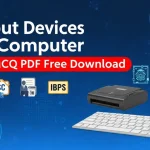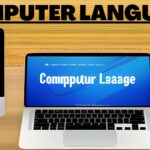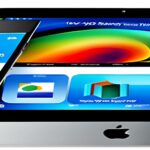Introduction To Computer Short questions PDF Download
1. The word computer has been derived from which of the following language?
(1) Greek (2) English
(3) Hindi (4) Latin
2. Input, output and processing devices grouped together represent a(n)
(1) mobile device
(2) information processing cycle
(3) circuit board
(4) computer system
3. Which of the following is the correct order of the four major functions of a computer?
(1) Process, Output, Input, Storage
(2) Input, Output, Process, Storage
(3) Process, Storage, Input, Output
(4) Input, Process, Output, Storage
4. Collecting the data and converting it into information is called
(1) processing
(2) compiling
(3) importing
(4) exporting
(5) None of these
5. Computer cannot perform
(1) input
(2) output
(3) thinking
(4) processing
6. A computer cannot perform which of the following functions?
(1) Addition
(2) Subtraction
(3) Bake a cake
(4) Division
(5) None of these
7. Part number, description and number of parts ordered are examples of [IBPS Clerk 2013]
(1) control
(2) output
(3) processing
(4) feedback
(5) input
8. Benefits of computers are
(1) very fast and can store huge amount of data
(2) provide accurate output either input is correct or not
(3) think about the processing
(4) All of the above
9. A collection of unprocessed items is
(1) information
(2) data
(3) memory
(4) reports
(5) None of these
10. Which among the following cycle consists of an input, processing, output and storage
as its constituents?
(1) Processing
(2) Output
(3) Input
(4) Storage
(5) Data
11. ……… is data that has been organised and presented in a meaningful fashion.
(1) A process
(2) Software
(3) Storage
(4) Information
(5) Data
12. Data or information used to run the computer is called
(1) hardware
(2) CPU
(3) peripheral
(4) software
(5) None of these
13. The steps and tasks needed to process data, such as responses to questions or clicking
an icon, are called
(1) instructions
(2) the operating system
(3) application software
(4) the system unit
(5) the hardware unit
14. The earliest calculating device is
(1) calculator
(2) abacus
(3) difference engine
(4) analytical engine
(5) None of the above
15. Abacus can perform
(1) addition
(2) subtraction
(3) multiplication
(4) Both ‘1’ and ‘2’
16. Napier’s technology used for calculation called
(1) Naptologia
(2) Vibologia
(3) Semiconductor
(4) Rabdologia
17. Pascaline is also known by
(1) abacus
(2) adding machine
(3) division machine
(4) difference machine
18. Punched cards were first introduced by
(1) Powers
(2) Pascal
(3) Jacquard
(4) Herman Hollerith
(5) None of these
19. Which of the following is known as the father of the computer?
(1) Dennis Ritchie
(2) Napier
(3) Charles Babbage
(4) Alan Turing
20. Analytical Engine developed by
(1) Blaise Pascal
(2) Charles Babbage
(3) Dennis Ritchie
(4) Alan Turing
21. The Analytical Engine developed during first generation of computers used ……… as a
memory unit.
(1) RAM
(2) floppies
(3) cards
(4) counter wheels
(5) None of
22. Tabulating machine was the first electromechanical machine developed by
(1) Herman Hollerith
(2) Howard Aiken
(3) Blaise Pascal
(4) John Napier
23. Who designed the first electronic computer-ENIAC?
(1) Von Neumann
(2) Joseph M Jacquard
(3) Presper Eckert and John W Mauchly
(4) All of the above
24. The first computer which provides storage is
(1) EDSAC
(2) EDVAC
(3) MARK-I
(4) ACE
25. Name the first general purpose electronic computer.
(1) ADVAC
(2) ADSAC
(3) UNIVAC
(4) EDVAC
(5) None of these
26. Computer size was very large in
(1) first generation
(2) second generation
(3) third generation
(4) fourth generation
27. First generation computers were based on
(1) transistors
(2) conductors
(3) ICs
(4) vacuum tubes
28. Computer built before the first generation computer was
(1) mechanical
(2) electromechanical
(3) electrical
(4) electronics
29. First generation computers used ……… languages.
(1) machine
(2) assembly
(3) Both ‘1’ and ‘2’
(4) high level
(e) None of these
30. Speed of first-generation computer was in
(1) nanoseconds
(2) milliseconds
(3) nano-milliseconds
(4) microseconds
(5) None of these
31. The period of the second generation computers was
(1) 1946-1958
(2) 1940-1960
(3) 1956-63
(4) 1957-1964
32. Time-sharing became possible in ………generation of computers.
(1) first
(2) second
(3) third
(4) fourth
(5) None of these
33. Integrated Chips or IC’s were started to be used from which generation of computers?
(1) 1st Generation
(2) 2nd Generation
(3) 3rd Generation
(4) 4th Generation
(5) 5th Generation
34. Chip is a common nickname for a(n)
(1) transistor
(2) resistor
(3) integrated circuit
(4) semiconductor
(5) None of these
35. The third generation computers were made with
(1) biochips
(2) transistors
(3) integrated circuits
(4) vacuum tubes
(5) discrete components
36. Integrated Circuit (IC) or chips used in computers are made with
(1) copper
(2) aluminum
(3) gold
(4) silicon
(5) silver
37. A complete electronic circuit with transistors and other electronic components
on a small silicon chip is called a(n)
(1) workstation
(2) CPU
(3) magnetic disc
(4) integrated circuit
(5) complex circuit
38. PCs are considered fourth-generation and contain
(1) information
(2) data
(3) vacuum tubes
(4) microprocessors
(5) transistors
39. Artificial Intelligence is an example of
(1) first-generation computer
(2) second-generation computer
(3) third-generation computer
(4) fourth-generation computer
(5) fifth generation computer
40. the First computer of India is
(1) PARAM
(2) Siddhartha
(3) IBM-370
(4) CRAY-1
41. Computer’s basic architecture was developed by
(1) John Von Neumann
(2) Charles Babbage
(3) Blaise Pascal
(4) Jordan Murn
42. Who developed an integrated chip?
(1) Robert Nayak
(2) C Babbage
(3) JS Kilby
(4) CV Raman
43. In latest generation computers, the instructions are executed
(1) only parallel
(2) only sequentially
(3) Both ‘1’ and ‘2’
(4) Either ‘1’ or ‘2’
44. Microcomputer hardware consists of three basic categories of physical equipment
(1) keyboard, monitor, hard drive
(2) system unit, input/output, memory
(3) system unit, input/output, secondary storage
(4) system unit, primary storage, secondary storage
45. Which of the following options correctly expresses the meaning of the term ‘PCs’?
(1) Independent computers for all working staff
(2) Personal computers widely available to individual workers with which they can access
information from layer systems and increase their personal productivity
(3) Packed computers system formed by joining together of various computer terminals
(4) Computer manufactured by the Pentium Company
(5) None of the above
46. Which of the following is a small microprocessor-based computer designed to be used
by one person at a time?
(1) Netbook
(2) Supercomputer
(3) All-in-one
(4) Notebook
(5) Personal computer
47. Tablet PC is a type of
(1) microcomputer
(2) supercomputer
(3) minicomputer
(4) mainframe computer
48. Computers that are portable and convenient to use for users who travel, are known as
(1) supercomputers
(2) minicomputers
(3) mainframe computers
(4) laptops
49. Desktop and personal computers are also known as
(1) supercomputers
(2) servers
(3) mainframes
(4) peripheral equipment
(5) microcomputers
50. Which of the following uses a handheld operating system?
(1) A supercomputer
(2) A personal computer
(3) A laptop
(4) A mainframe
(5) A PDA
51. Palmtop computer is also known as
(1) personal computer
(2) notebook computer
(3) tablet PC
(4) handheld computer
52. A central computer that holds collections of data and programs for many PCs,
workstations and other computers is a
(1) supercomputer
(2) minicomputer
(3) laptop
(4) server
53. Which computer is used for Computer-Aided Design (CAD) calculations?
(1) Minicomputer
(2) Mainframe computer
(3) Supercomputer
(4) Microcomputer
54. Which of the following is generally costlier?
(1) Server
(2) Notebook computer
(3) Personal computer
(4) Laptop computer
(5) Mainframe
55. The user generally applies ……… to access mainframe or supercomputer.
(1) terminal
(2) node
(3) desktop
(4) handheld
56. These are specially designed computers that perform complex calculations extremely
rapidly.
(1) Servers
(2) Supercomputers
(3) Laptops
(4) Mainframes
57. A ……… is a large and expensive computer capable of performing scientific and
business applications.
(1) supercomputer
(2) mainframe computer
(3) minicomputer
(4) handheld computer
58. First supercomputer developed in India is
(1) PARAM
(2) CRAY-1
(3) PARAM ISHAN
(4) EPRAM
59. Pratyush is …… fastest supercomputer in the world.
(1) first
(2) second
(3) third
(4) fourth
60. Pratyush supercomputer is dedicated for
(1) multimedia
(2) weather forecasting
(3) recreation
(4) military personnel
61. Which of the following is India’s first multi-petaflops (PF) supercomputer?
(1) PARAM (2) Pratyush
(3) PARAM Ishan (4) Tianhe-2
62. Analog computer works on the supply of
(1) continuous electrical pulses
(2) electrical pulses but not continuous
(3) magnetic strength
(4) physical strength
63. Seismograph is an example of
(1) Analog computer (2) Digital computer
(3) Hybrid computer (4) All of thes
64. These computers work by calculating the binary digits.
(1) Hybrid (2) Digital
(3) Analog (4) General purpose
65. Choose the odd one out. [IBPS Clerk 2011]
(1) Microcomputer
(2) Minicomputer
(3) Supercomputer
(4) Digital computer
(5) Notebook computer
66. A hybrid computer is the one having the combined properties of [SBI Clerk 2013]
(1) super and microcomputers
(2) mini and microcomputers
(3) analog and digital computers
(4) super and minicomputers
(5) None of the above
67. Which types of computers are used in hospitals like ECG and DIALYSIS?
(1) Digital (2) Hybrid
(3) Analog (4) Microcomputer
68. General purpose computers are used for
(1) creating a small database
(2) performs calculation
(3) accounting
(4) All of the above
69. Which is not an example of special purpose
computer?
(1) Automatic aircraft landing
(2) Word processor
(3) Multimedia computer
(4) All of the above
70. Which type of computer is used in
automatic aircraft landing?
(1) General computer
(2) Supercomputer
(3) Special-purpose computer
(4) Microcomputer
71. Which of the following is the smallest and
fastest computer imitating brain working?
(1) Supercomputer
(2) Quantum computer
(3) Param-10000
(4) IBM chips
(5) None of these
72. In which of the following computers are used?
(1) Banking (2) Education
(3) Offices (4) All of these
73. It is the science that attempts to produce machines that display the same type of
intelligence that humans do
(1) Nanoscience
(2) Nanotechnology
(3) Simulation
(4) Artificial Intelligence (AI)
74. Which of the following deals with the design, construction, operation and use of robots?
(1) Robotics (2) Artificial Intelligence
(3) Nano computer (4) Quantum computer



